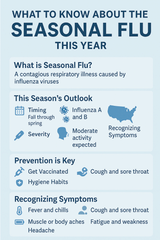How to properly store and keep track of pharmaceuticals in medical facilities
Pharmaceuticals are a vital component of medical facilities, and proper storage and tracking are essential for patient safety and effective treatment. Improper storage and handling of pharmaceuticals can lead to contamination, reduced potency, and medication errors, which can have serious consequences for patients. Therefore, it is important to establish and maintain appropriate protocols for the storage and tracking of pharmaceuticals in medical facilities. Here are some best practices to consider:
- Establish storage guidelines: Medical facilities should have clear guidelines for the storage of pharmaceuticals, including requirements for temperature, humidity, light, and ventilation. These guidelines should be based on the manufacturer's recommendations, as well as any regulatory requirements.
- Use appropriate storage containers: Pharmaceuticals should be stored in containers that are specifically designed for pharmaceutical storage. These containers should be kept clean and free of any contaminants.
- Label all pharmaceuticals: Each pharmaceutical should be labeled with its name, strength, expiration date, and lot number. This information should be updated regularly and should be legible to avoid confusion.
- Rotate inventory: To prevent medication expiration, the facility should implement a system for rotating inventory. The first-in, first-out (FIFO) system is a common method that ensures the oldest medications are used first, reducing the risk of expired medication use.
- Store medications separately: Pharmaceuticals should be stored separately from other materials to prevent contamination. For example, chemotherapy drugs should be stored in a separate area from other medications due to their hazardous nature.
- Keep track of inventory: Medical facilities should use a tracking system to keep track of their inventory. This system should include information about the type and quantity of medications in stock, the date they were received, and their expiration dates. This information should be regularly reviewed and updated.
- Conduct regular inspections: Regular inspections should be conducted to ensure that pharmaceuticals are stored properly, and that no expired or damaged medications are being used.
- Train staff: Medical staff should be trained on proper pharmaceutical storage and handling procedures. This training should be provided to new staff members and updated regularly to keep staff up-to-date on any changes in storage protocols.
Proper storage and tracking of pharmaceuticals in medical facilities are critical for patient safety and effective treatment. By implementing guidelines for storage, using appropriate containers, labeling medications, rotating inventory, storing medications separately, tracking inventory, conducting regular inspections, and training staff, medical facilities can ensure that pharmaceuticals are stored safely and efficiently. These measures will reduce the risk of contamination, medication errors, and other issues that can lead to adverse patient outcomes.
Truway Health News & Insights
Breathe, Refuel, Recharge: Finding Your Daily Balance
Written by Perry JohanssenPublished and Edited by Truway Health Life rarely slows down on its own. B...
Truway Health Launches “ImmuneNet”: A New Era in Quantum-Synaptic Immunotherapy
Reimagining How Immunity Can Be Understood and Guided At Truway Health, innovation never sleeps.Toda...
Announcing the HEALTH Trial: Humanoid Evaluation and Learning in Healthcare
Published by Truway Health, Inc.Principal Investigator: Gavin SolomonClinicalTrials.gov Identifier:...
We’re thrilled to launch our first-ever clinical trial of TruDxPc
Study Identification Protocol ID: TRHW-DX-001 Brief Title: Truway Diagnostic Tools in Primary Ca...
What to Know About the Seasonal Flu This Year
As cooler weather sets in, flu season returns. Each year brings new strains, evolving guidance, and...
Gamification and Health: Turning Wellness Into a Daily Game
Introduction For many people, staying healthy feels like a chore: eating clean, exercising regularly...







